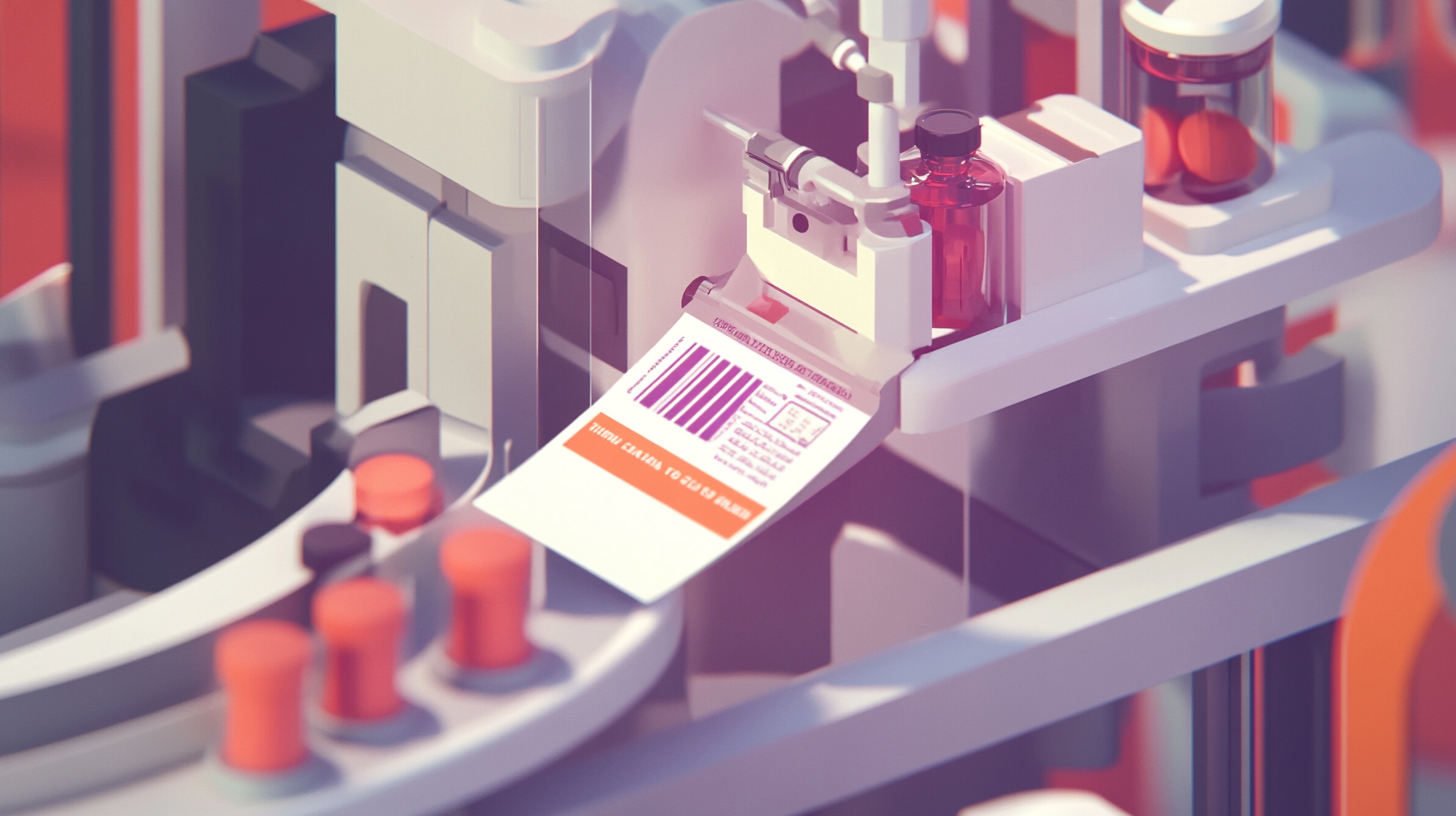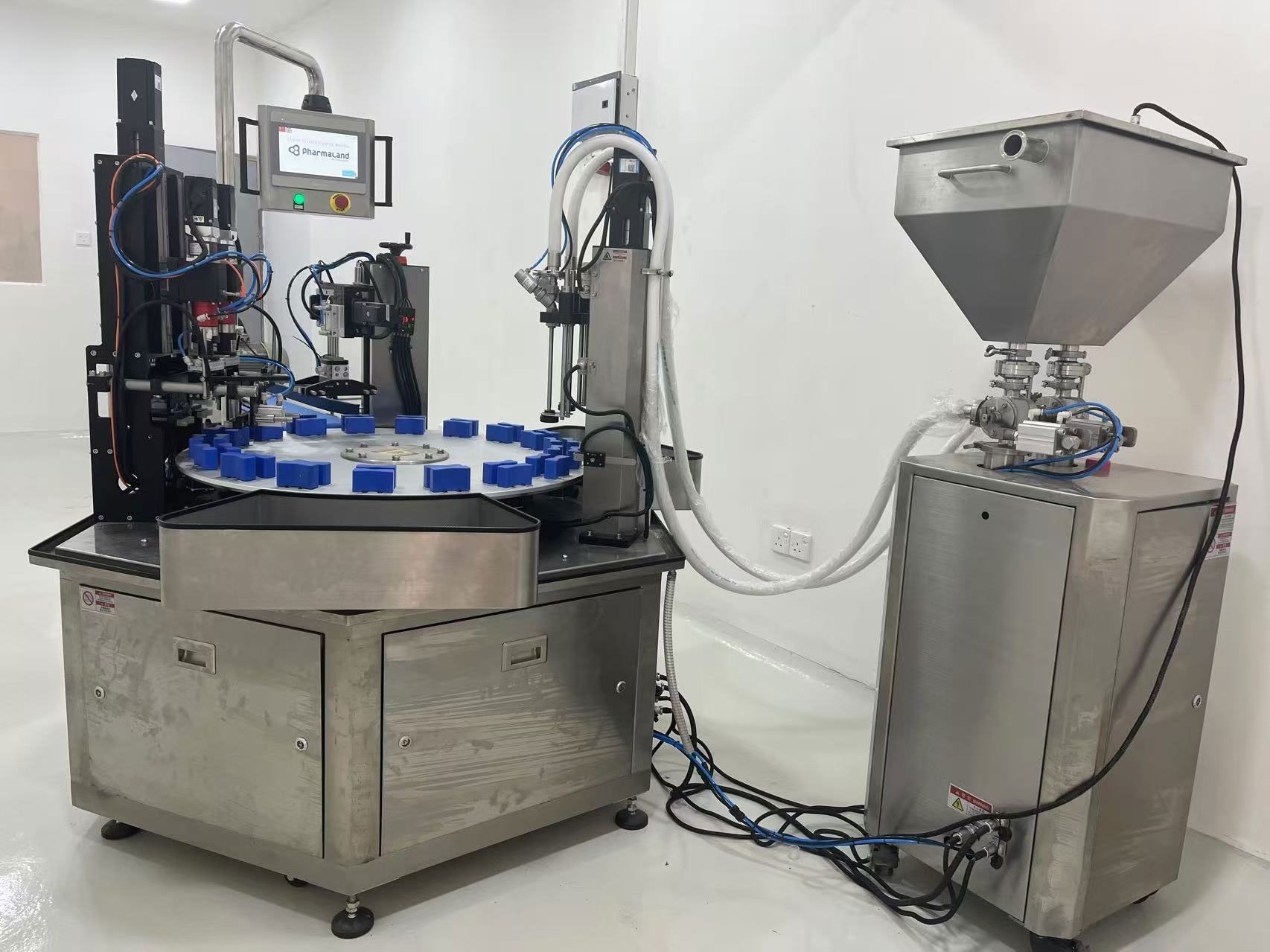
03 Apr Streamlining Packaging Operations: The Benefits of Liquid Filling and Capping Machines
Introduction
Liquid filling and capping machines play a vital role in the packaging industry by automating the process of filling containers with liquid products and securely sealing them with the appropriate caps. These machines are essential in various sectors, including pharmaceuticals, food and beverage, cosmetics, and chemicals, as they enhance production efficiency, ensure consistent fill volumes, and maintain product integrity. With advancements in technology, liquid filling and capping machines have become more versatile, accurate, and reliable, offering solutions for diverse packaging requirements.
What is a Liquid Filling and Capping Machine?
A liquid filling and capping machine is an automated system designed to fill containers with liquid products and apply caps to seal them. These machines are critical in industries where precision and consistent filling are required, such as the pharmaceutical and food sectors. They help to optimize production efficiency, reduce manual labor, and ensure that each product is accurately filled and securely capped to prevent leakage or contamination.
Types of Liquid Filling Machines
Liquid filling machines come in various types, each suitable for specific applications depending on the product characteristics. Some of the most common types of liquid filling machines include:
Piston Fillers:
These machines use a piston mechanism to draw and dispense liquid into containers. Piston fillers are ideal for products with varying viscosities, such as oils, syrups, and creams. They are highly accurate and can handle thick liquids effectively.
Peristaltic Pump Fillers:
Peristaltic pump filling machines are equipped with flexible tubing and are perfect for sterile applications. These machines move liquid through the tubing, minimizing the risk of contamination. They are especially suitable for pharmaceutical applications and sensitive liquids.
Gear Pump Fillers:
These machines use rotating gears to transfer liquid from one area to another, making them highly accurate for filling low to medium viscosity products like sauces and lotions. Gear pumps provide stable flow control and high precision.
Overflow Fillers:
Overflow filling machines are used to fill containers to a predetermined level. These machines ensure uniform fill volumes and are often used for thin liquids like beverages.
Types of Capping Machines
Capping machines play an essential role in securely sealing containers. Different types of capping machines are available based on the closure type and production needs:
Screw Capping Machines:
Screw capping machines are designed to apply screw caps to containers, ensuring a secure and tamper-evident seal. These machines are widely used in the pharmaceutical and food industries for liquid products in bottles that require a tight seal.
Snap-On Capping Machines:
These machines apply snap-on caps that securely snap into place, offering a simple yet effective sealing solution. They are commonly used for packaging in the beverage industry.
Press-On Capping Machines:
Press-on capping machines press caps onto containers, making them suitable for products that require press-on type closures, such as certain consumer goods or health products.

Key Features of Liquid Filling and Capping Machines
Precision Filling: Liquid filling machines are designed to ensure highly accurate fill volumes, typically within a tolerance of ±1%. This ensures that each product receives the precise amount of liquid, minimizing waste and ensuring product consistency.
Versatility: These machines are capable of handling various container shapes and sizes, including round containers and square bottles. By providing customized configurations, liquid filling and capping machines can accommodate the diverse packaging needs of different industries.
Automation: Automation in filling and capping processes reduces the need for manual labor, improves operational efficiency, and minimizes human errors. This ensures that the production line runs smoothly and consistently, reducing the risk of defects and downtime.
Flexibility: Liquid filling and capping machines can be easily adapted to handle different product types, such as oils, syrups, and pharmaceuticals. This flexibility allows manufacturers to change products or packaging formats with minimal adjustments, ensuring quick changeovers and reducing downtime.
Benefits of Using Liquid Filling and Capping Machines
Increased Efficiency: These machines streamline the production process, enabling high-speed filling and capping, which increases output and reduces the time needed for manual labor. This results in faster production cycles and higher overall productivity.
Consistent Quality: By automating the filling and capping processes, these machines maintain consistent fill volumes and ensure that each container is securely sealed. This consistency is crucial in industries such as pharmaceuticals and food, where regulatory compliance and product quality are essential.
Cost Savings: Liquid filling and capping machines reduce labor costs by automating repetitive tasks. Additionally, they minimize product waste by ensuring that only the required amount of liquid is dispensed and accurately capped, which leads to cost savings and improved profitability.
Regulatory Compliance: These machines are designed to meet industry regulations, such as GMP (Good Manufacturing Practices) and FDA guidelines. This ensures that the packaging process adheres to the required safety and quality standards, providing customers with reliable, compliant products.
A bottle capping machine is an essential piece of equipment in the packaging industry, designed to securely seal containers with various types of caps, such as screw caps, snap-on caps, and press-on caps, ensuring product integrity and preventing contamination.
Considerations When Choosing a Liquid Filling and Capping Machine
When selecting a liquid filling and capping machine, it is essential to consider several key factors to ensure the machine meets your production needs:
Product Characteristics: Evaluate the viscosity and nature of the liquid to determine the appropriate filling technology. For example, thicker liquids may require piston fillers, while thinner liquids may benefit from overflow filling machines.
Container Specifications: Ensure that the machine can handle the specific types of containers you use, whether they are round containers, square bottles, or tapered containers. Some machines are designed to accommodate a range of container shapes and sizes.
Production Volume: Consider the production speed required for your operations. Machines that offer high-speed filling and capping are suitable for large-scale operations, while semi-automatic machines may be better for smaller production runs.
Cap Type and Size: Determine the type of cap used for your containers, such as screw caps or snap-on caps. Ensure the machine is compatible with the cap type and can handle various cap diameters.
liquid filling capping machine is vital component in modern manufacturing, ensuring products are accurately filled and securely sealed. Modern bottle capping machines are engineered to handle a diverse array of bottle types, including round containers, square bottles, and tapered containers. Equipped with advanced capping heads, these machines utilize the latest technologies to ensure precise torque application, accommodating various cap diameters and types such as screw caps, snap-on caps, and press-on caps. This versatility allows for quick changeovers between different product lines, enhancing production efficiency and maintaining consistent product quality. By integrating these state-of-the-art features, manufacturers can achieve high-speed operations while ensuring secure and tamper-evident seals across a wide range of packaging formats.By understanding the different types of machines, their features, and the latest technological advancements, businesses can select the appropriate equipment to meet their production needs. Integrating these machines with tablet counters and adopting advanced technologies can further enhance production efficiency and product quality.
